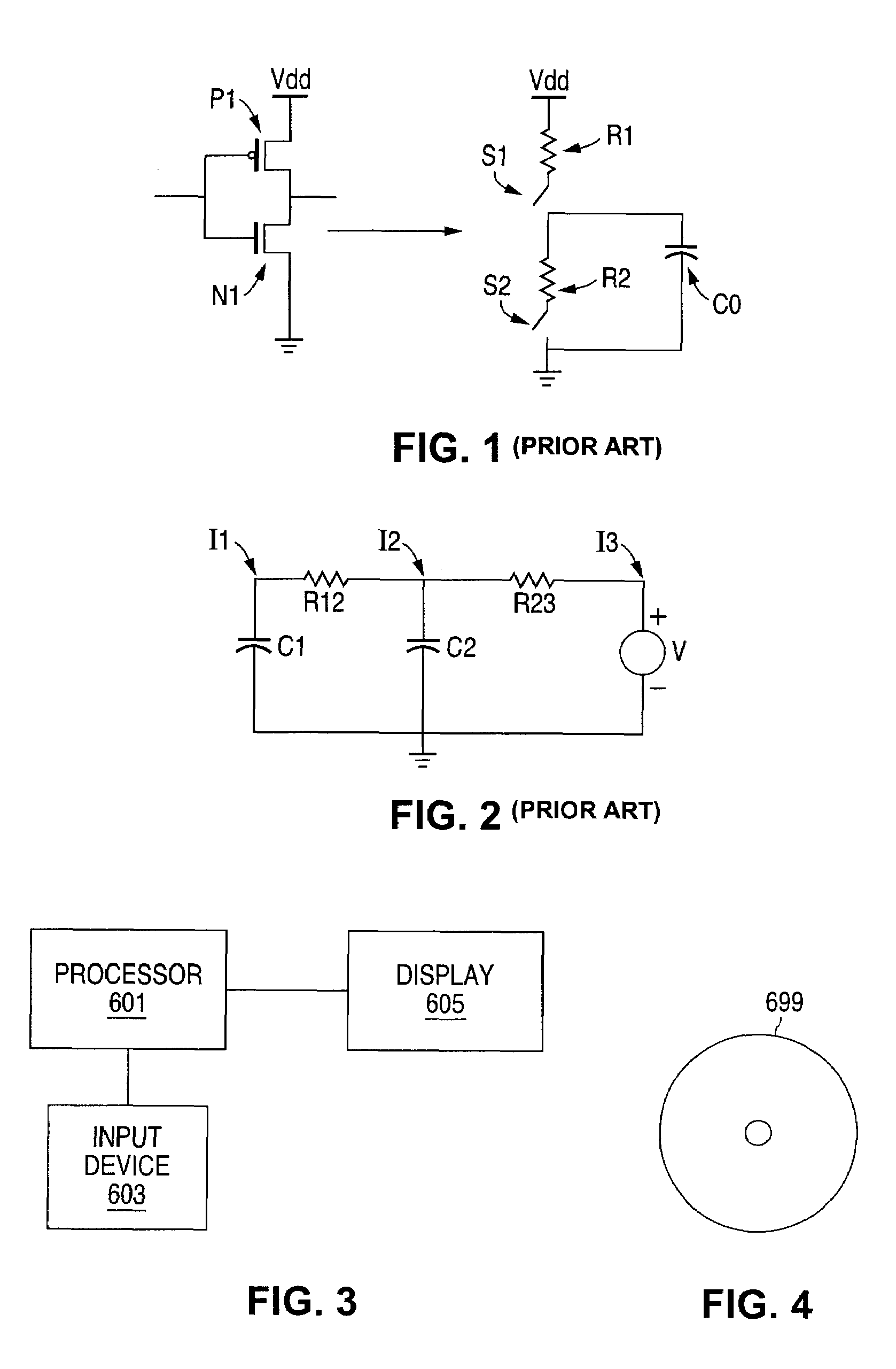Method and system for device level simulation of large semiconductor memories and other circuits
a semiconductor memory and circuit technology, applied in the field of device level simulation of large semiconductor memory and other circuits, can solve the problems of long-standing challenges, inability to effectively simulate or verify large semiconductor memory circuits, and impracticality of use for this purpos
- Summary
- Abstract
- Description
- Claims
- Application Information
AI Technical Summary
Benefits of technology
Problems solved by technology
Method used
Image
Examples
Embodiment Construction
[0012]In a class of embodiments, the invention is a method for device level simulation of a circuit modeled by a set of CCR graphs, wherein the circuit includes MOS transistors having unknown gate potentials, each of the CCR graphs includes a top rail, and a bottom rail, and variable nodes (i.e., some number, “N,” of variable nodes), each of the transistors having unknown gate potential is modeled in the CCR graphs as a selectable resistor and optionally also at least one other element (e.g., a capacitor), and each said selectable resistor has a selected one of a first resistance and a second resistance much larger than the first resistance. The method includes the steps of: (a) determining potentials Von1, Von2, . . . , VonN, at the variable nodes (of one of the CCR graphs) with each selectable resistor of the graph having its first resistance and without determining effective resistances between the variable nodes and the top rail or the bottom rail, where Voni is the potential at...
PUM
 Login to View More
Login to View More Abstract
Description
Claims
Application Information
 Login to View More
Login to View More - R&D
- Intellectual Property
- Life Sciences
- Materials
- Tech Scout
- Unparalleled Data Quality
- Higher Quality Content
- 60% Fewer Hallucinations
Browse by: Latest US Patents, China's latest patents, Technical Efficacy Thesaurus, Application Domain, Technology Topic, Popular Technical Reports.
© 2025 PatSnap. All rights reserved.Legal|Privacy policy|Modern Slavery Act Transparency Statement|Sitemap|About US| Contact US: help@patsnap.com



